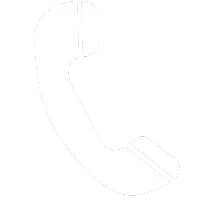Power Quality Study
Recent developments in technology have increased the penetration of non-linear loads in power systems of all capacities, whether it be a large office block with lots of personal computers or an industrial set up with converters and VFDs or just a residential block with DC inverter air conditioners. Their characteristic harmonic emissions must be identified, studied and rectified with corrective measures to save on power consumption costs and meet the utility standards.
This is where the use of a power quality study becomes imperative, as it can be critical in reducing the facility downtime and enhancing productivity.
Objective
A Power Quality Study seeks to evaluate the harmonic footprint of the area under study and accordingly recommend corrective measures to minimize harmonic distortions and ensure power saving and standard compliance.
Study Methodology
A Power Quality Study is a three stage process consisting of.
- Monitoring through Power-Quality Meters
Power Quality meters are set-up at key locations throughout the area under study, they are programmed to record the harmonic spectrum for one or more cycles of the daily routine activities of the facility.
- Identification of Sources of Harmonic Emission
Once a fair duration is recorded, it is thoroughly analyzed and patterns of harmonic generations are critically studied. AllumiaX engineers may recommend a remedial action at this stage of study after assessing the recorded data.
- Modelling and Simulation
The power system under consideration is modeled using the industry standard Electrical Transient and Analysis Program (ETAP) and a complete ‘worst case’ harmonic scenario is simulated on the software. This will clearly discern the harmonics distribution in the area under study. It is also ensured that simulation results are consistent with practical results recorded with power quality meters.
- Designing a Suitable Mitigation Scheme
An analysis with the harmonic analysis toolset in ETAP is then used to design the most optimum, cost effective and efficient harmonic reduction scheme for the facility. A typical scheme may include combinations of active and passive harmonic filters on different busses. Power Quality meters set-up at the start of the study will testify the reduction in harmonic distortion achieved after implementation of mitigation scheme.
Study Outcomes & Recommendations
The system under consideration is fully evaluated for its ‘worst case’ harmonic emission scenario and made more resilient to the occurring harmonics. It is expected that:
- Harmonic distortion limits imposed by the utility will be met at the point of common coupling.
- Harmonic distortion standards set by IEEE will be met throughout the facility to their maximum possible extent.
- Efficiency will increase due to a significant reduction in harmonics, leading to cost savings in the long-run.
- System equipment will have a prolonged life and will require less reactive maintenance due to being less prone to damages caused by harmonic distortions, particularly rotating machines.
- Overall reliability of the system will increase.
Study Deliverables
A comprehensive set of deliverable reports is provided presenting the findings and recommendations of the Power Quality Study. The deliverable may be expected to include:
- Detail of the original system under consideration.
- Detail of the points of common coupling and points where PQ meters were set-up.
- Detail of a typical routine cycle of the facility inferred through PQ monitoring.
- Identification of the sources and patterns of harmonic emission.
- Preliminary observations and recommendations.
- Detail of the ‘worst case’ harmonic distortion scenario simulated in ETAP.
- Detail of the simulated system in the Electrical Transient and Analysis Program after the addition of the harmonic reduction method.
- Design parameters and specifications of the recommended harmonic reduction method.
- Recommended installation practice and location of the harmonic reduction method.
- International standards and code compliance throughout the study process.
AllumiaX is a professional electrical engineering company that offers specialty engineering studies, field services, and infrared thermography.
Contact us today to learn more and get started.

Talha Qamar
Sales and Business Development
Office: (206) 687-4009 Ext.102
1187 N Willow Ave #103-40
Clovis, CA 93611









 (206) 687-4009
(206) 687-4009



